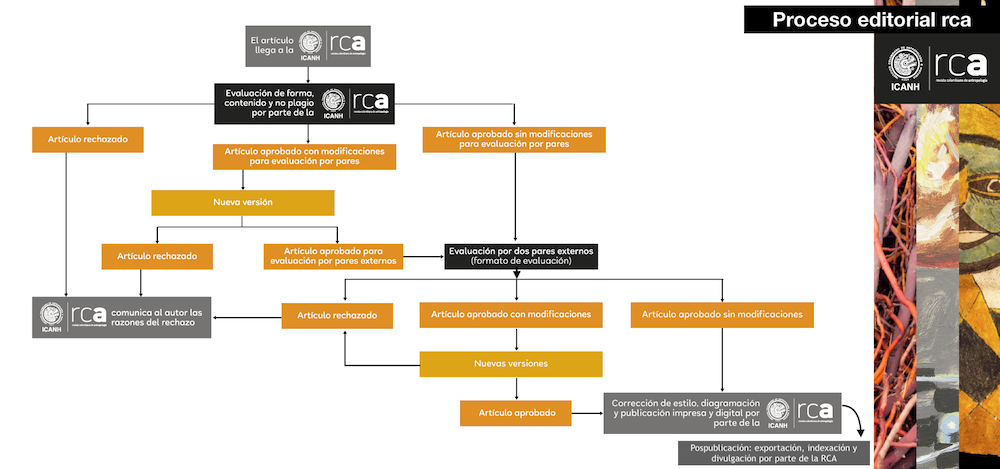Editorial process
The Colombian Journal of Anthropology (RCA) receives unpublished contributions that contribute theoretically or ethnographically to anthropology or related social sciences and that are framed in the following typology: scientific research article, review article, reflection article, short article, report of case and critical reviews.
Manuscripts are submitted to the RCA editorial process, which includes two phases: an evaluation phase (approximately 9 months) and a publication phase (which takes at least 3 months). This means that at least 12 months elapse between receipt of the manuscript and its publication.
It is understood that the articles or reviews submitted for consideration by the journal are original, unpublished and that they will not be simultaneously submitted to other publication media. If this is not the case, the author must inform the RCA at the time of application.
Reviews should be about recent posts (no more than 4 years old). The journal will only evaluate critical reviews. A critical review not only provides an adequate synthesis of the work, but also offers an argument or comment on it that highlights the contribution of the reviewed text or its relevance for the understanding of a given situation, a problem or a topic of academic interest or public. The evaluation of these contributions depends exclusively on the editorial team of the RCA, who will define the relevance of the contribution within 3 to 6 months after being received, abiding by the aforementioned criteria.
Contributions received by the RCA that are research articles, reflection, review, short article or case report will be submitted to an evaluation process consisting of three instances: 1) preliminary evaluation by the journal's editorial team, 2) evaluation by two external peers and 3) final editorial evaluation.
1. Preliminary editorial evaluation of the RCA editorial team
The editorial team of the Journal initially values compliance with the norms for the submission of manuscripts, as well as the quality, originality and relevance of the contributions. These include: form and content requirements, original nature of the contribution, relevance of the topic, bibliography used, clarity in writing and adequate citation. This evaluation defines if the contribution is rejected or if it is admitted and continues the evaluation process. In any case, the decision will be communicated to the author within a period not exceeding 6 months after receiving it.
2. Double blind evaluation by two external peers
The works accepted in the first editorial evaluation will be reviewed by two national or international academic peers, who will evaluate them according to content criteria, formal aspects, clarity of the arguments presented, evaluation of the conclusions obtained, among others (See the format of evaluation). Each evaluator must specify any of the following recommendations: if the refereed article is publishable as is; if it requires minor adjustments to publish; if it requires substantial changes to be published; whether it must be totally rewritten to be publishable; if it is a non-publishable text. The peer evaluation procedure is carried out under the double-blind modality.
In case of controversy between the external evaluations, the journal will assign a new external evaluator and submit the evaluations for the consideration of the Editor, who may go to the Editorial Committee of the RCA. In the event that an external evaluator desires to carry out the evaluation, the journal will assign a new reviewer.
In the evaluation format, the reviewers must declare that they do not know the author of the manuscript or have a conflict of interest to evaluate the subject.
3. Final editorial evaluation
Before being published, an article may require several versions that will be built from the recommendations made by both external peers and the editorial team of the journal. The RCA will determine which is the final version of each article and in what volume it will be published.
To facilitate the traceability of the adjustments between the versions, the authors will receive a format in which they must record: a) the suggestions of the reviewers and / or editors, b) the place in the text where the modifications were made and c) the reasons why the omitted suggestions were not accepted.
In turn, the RCA reserves the right to make style corrections and adaptation to the editorial guidelines of the Icanh publishing label, which is governed by the rules of the Royal Spanish Academy (RAE).
Evaluation deadlines
The evaluation process of each article requires at least 9 months from the date of receipt. This timeframe depends on factors such as the speed of evaluators, the quality of the article, the delay in shipping adjusted versions, etc. However, the expected time is approximate and is subject to the number of versions that the article requires for approval by the editor.
Contribution publication process
When the contributions successfully pass all the evaluation stages and the editor of the RCA approves their publication, the decision will be communicated to the author, indicating the volume and date on which the manuscript will be published. The journal reserves the right to make formal adjustments to the text within the framework of the bibliographic standardization work, adaptation to the editorial guidelines of the ICANH publishing label, orthographic and style correction. During this process, the journal will ask the author to review the adjusted versions, and their prompt cooperation is expected. Once the style correction is completed, the journal will begin the process of layout and review of galleys until the publication of the volume. During this last phase of the process, the author will not be asked to review the manuscript. However, until the moment of publication, the journal may request clarifications or missing information. The publication process requires at least 3 months after approval of the manuscript.
Communications
During the editorial process, communication between authors and the journal will be established through the journal's online editorial manager (Open Journal Systems).
Manuscript evaluation process
Proceso Editorial (Diagrama)

Evaluation criteria
Formato de evaluación externa para artículos



















